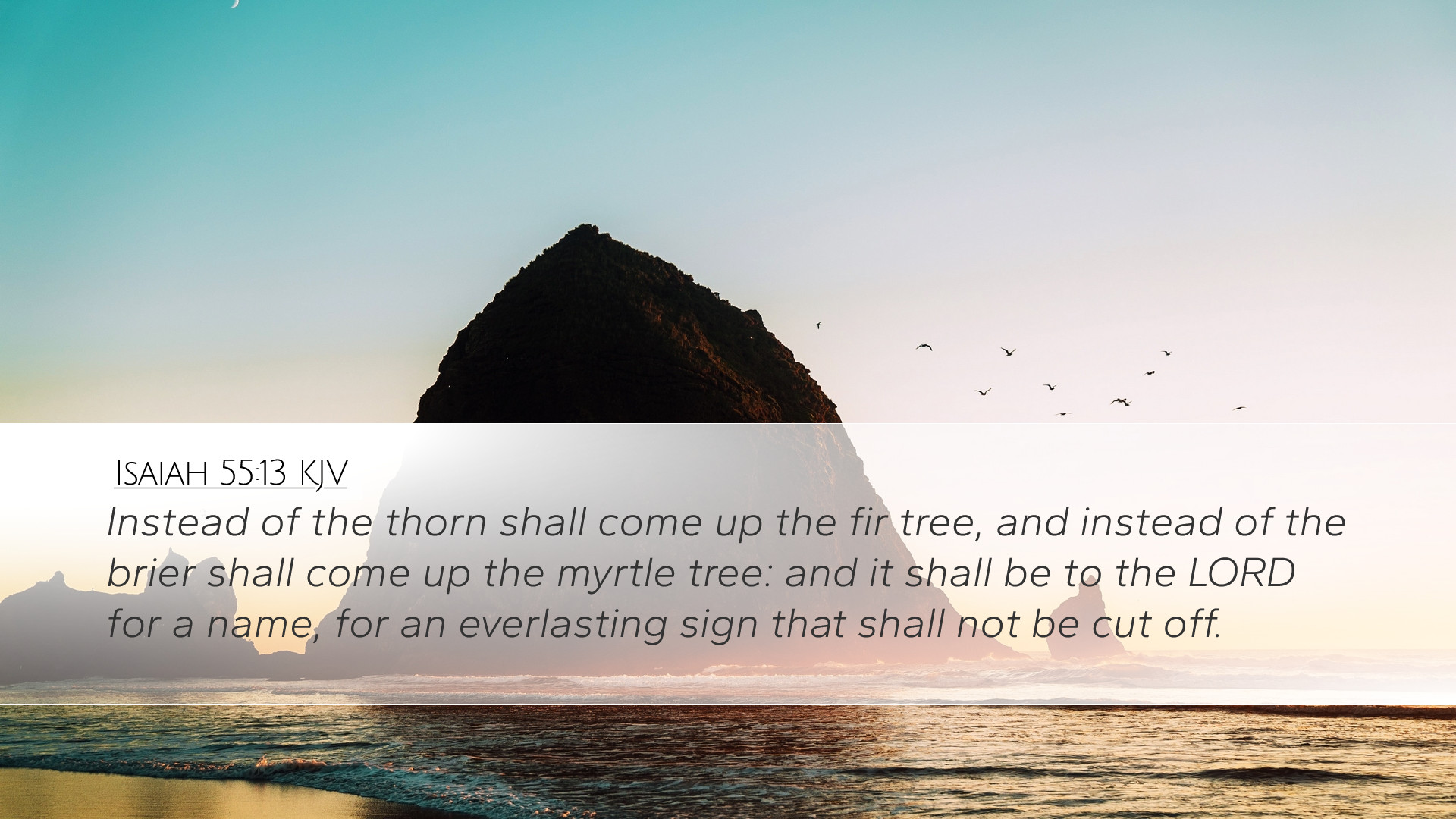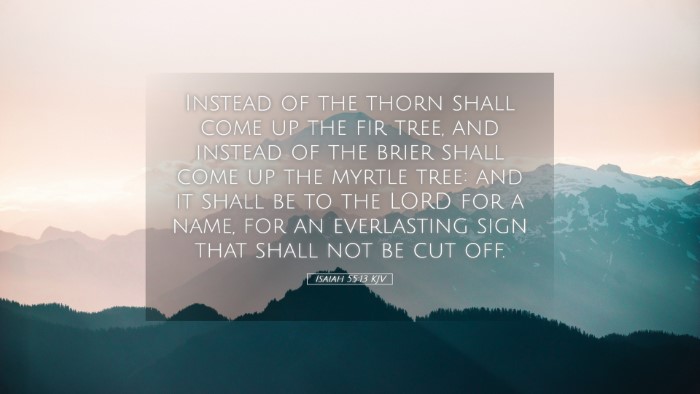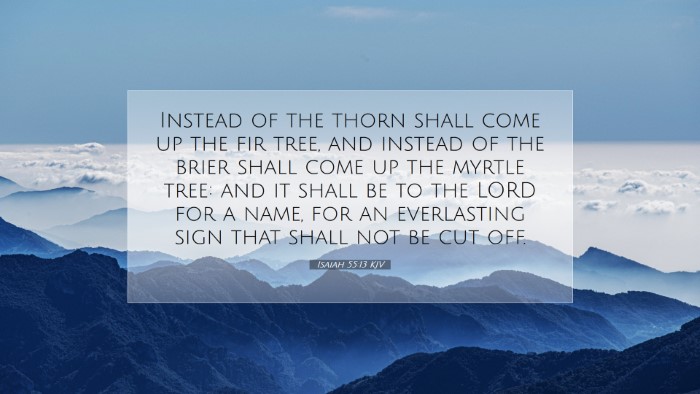Commentary on Isaiah 55:13
Verse: "Instead of the thorn shall come up the fir tree, and instead of the brier shall come up the myrtle tree: and it shall be to the Lord for a name, for an everlasting sign that shall not be cut off." (Isaiah 55:13, KJV)
Introduction
This verse serves as a profound illustration of transformation and renewal in the context of God's promise to His people. It contrasts the thorns and briers of a broken world with the flourishing growth of fir and myrtle trees, symbolizing the new creation that God is bringing forth in the lives of those who respond to His call. This commentary synthesizes insights from well-respected public domain commentaries including Matthew Henry, Albert Barnes, and Adam Clarke to provide a comprehensive understanding.
Thematic Overview
- A Promise of Change: The imagery of thorns and briars represents the struggles and sins of humanity, while fir and myrtle trees symbolize prosperity and beauty that God will establish.
- God's Sovereignty: The transformation in this verse reflects God's power over creation and His ability to bring forth new life from desolation.
- Eternal Significance: The phrase "everlasting sign" indicates that the effects of this transformation are not temporary but rather enduring, pointing towards God's eternal covenant with His people.
Detailed Exegesis
The Contrast of Vegetation
Henry notes the stark contrast between thorns and firs. Thorns are a biblical symbol of the curse resulting from the Fall (Genesis 3:18). They represent hardship, frustration, and barrenness. In contrast, the fir tree (a symbol of durability and strength) and the myrtle tree (noted for its fragrant blossoms) signify the blessings and beauty of God's restoration.
God's Promise of Restoration
Barnes elaborates on the restorative nature of God's work. This reversal of fate signifies more than physical restoration; it embodies the spiritual renewal that comes from God. The imagery implies that what was previously unfruitful will now bear the fruits of the Spirit, indicative of a people transformed by grace.
Theological Implications
Clarke states that this transformation serves as a divine declaration of God's glory. The once desolate land, now lush with new growth, becomes a testament to God’s ability to redeem and fulfill His promises. This speaks powerful truths to believers regarding their own lives; through faith, they can experience transformation from sin to holiness.
Spiritual Application
As pastors and theologians engage with this text, several implications surface:
- Celebrating New Life: There is a need for churches to facilitate environments where both spiritual and physical renewal are acknowledged.
- Hope in the Midst of Despair: This passage assures believers that change is possible, even when situations seem dire.
- Evangelical Call: The imagery invites believers to reflect on God’s transformative work as they share the Gospel with a world that often feels like thorns and briars.
Conclusion
Isaiah 55:13 beautifully captures the hope and promise that God extends to His people. Drawing insights from commentators like Matthew Henry, Albert Barnes, and Adam Clarke allows us to appreciate the layers of meaning within this verse. It emphasizes transformation, God's sovereignty, and the eternal nature of His promises. Through this understanding, we can encourage others to embrace the new life offered through faith, trusting in the divine ability to turn thorns into fir trees and briers into myrtles.


